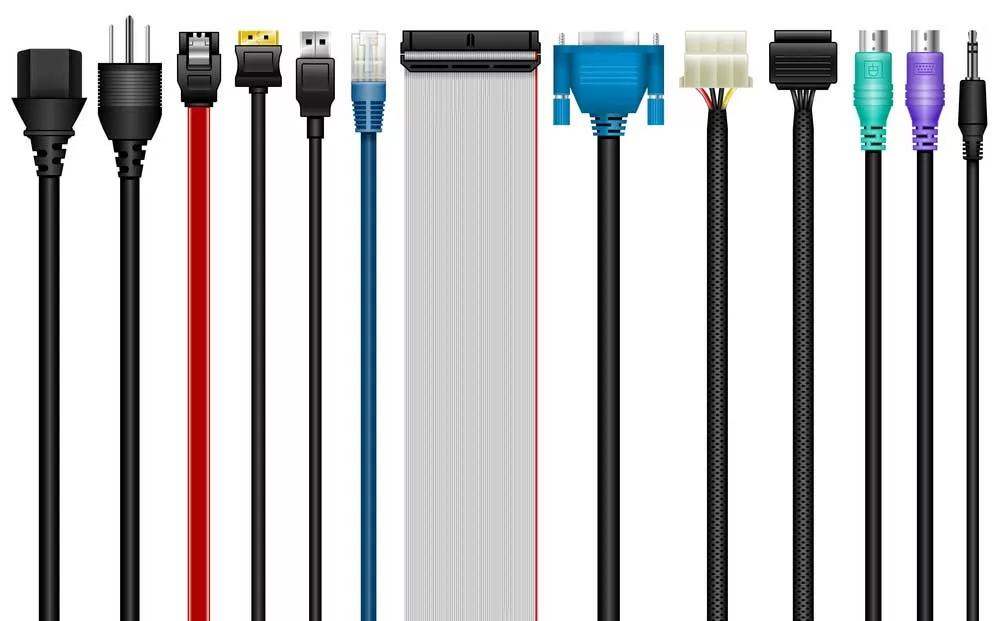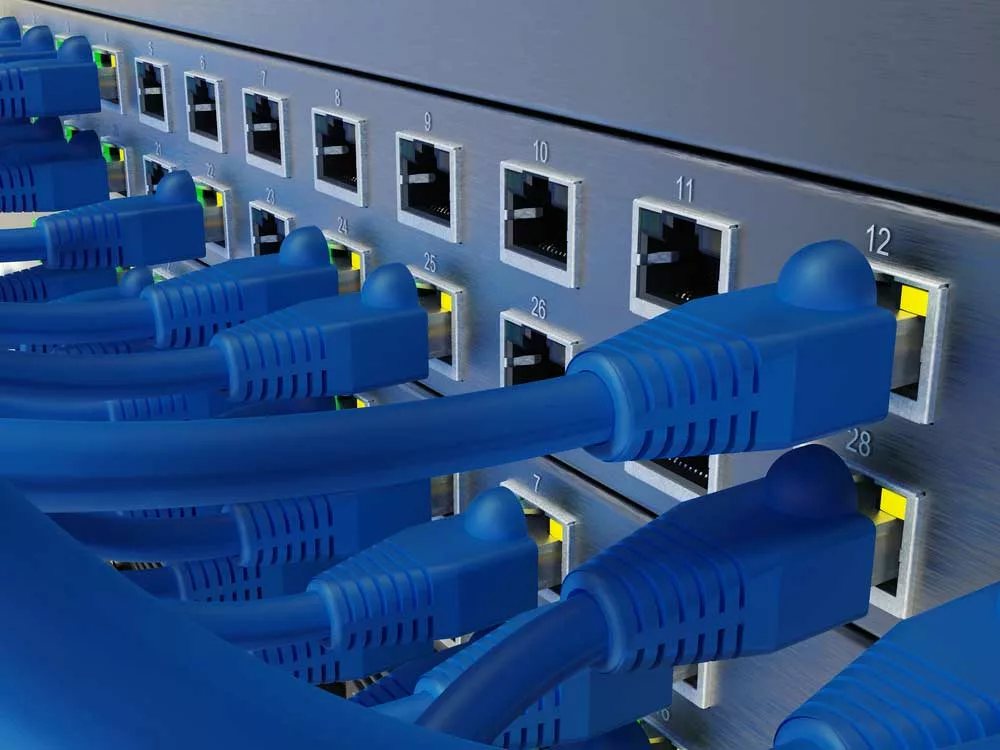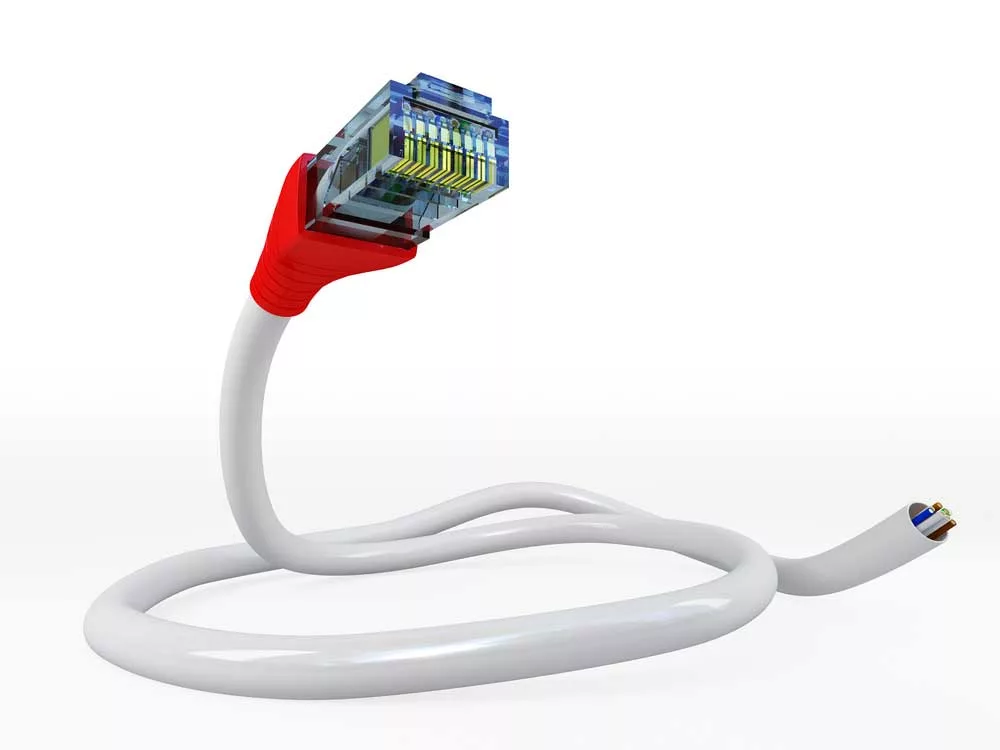Although wireless technology is quite prevalent, you may still need cables for computer networks to transfer data physically.
There are different types of network cables, including patch cables and Ethernet patch cables. Many people are confused about these two cables and ask, “can I use a patch cable as an Ethernet cable”?
This article discusses these two types of cables and their applications’ differences.
Table of Contents
- What is a Patch Cable?
- Different Types of Patch Cables:
- What is an Ethernet cable?
- Ethernet patch cable vs. Ethernet cable: What’s the difference?
- Can I use a patch cable as an Ethernet cable?
- Conclusion
What is a Patch Cable?
A patch cable connects two electronic devices, such as a computer and other hardware, together in a network. However, you can also transfer audio, video, and signals in non-network devices such as headphones and microphones with patch cables.
People also call them patch leads or patch cords; however, the term patch cords are more suited to non-network cables, which you use to wire non-stereo components.
Patch cables always have connectors at their ends, and they are more flexible than standard copper cables, which are stiff.

Different types of patch cable
Different Types of Patch Cables:
You can categorize patch cables into different groups.
Networking patch cables
Straight-through Ethernet cables link a computer to any nearby network, like a switch, router, hub, or switches to routers. You can use these cables to create hard-wired network connections in old buildings without wi-fi.
A Crossover cable is a special Ethernet cable that connects two similar devices.
However, is Patch Cable a Straight Through Cable? You can use a straight-through wired cable for connecting a host to a client—for example, a Cat5e cable.
You can connect printers, computers, and other devices to a hub or a router switch. On the contrary, there is nothing like straight-through cable in a fiber patch cable.
Straight-through cable Vs. Crossover cable: Standard
Before comparing patch and crossover cables, you must know about T-568A and T-568B standards. These are two patch cable wiring schemes that give two different connectivity forms. The common one is T569B, but T-568A is also common in many devices.
If a patch cord/cable has both ends wired through one standard only, it is a straight-through connection. You can use both standards as straight-through cables. However, when both ends have different standards, the connection is crossover. Some networking applications require an Ethernet crossover cable with T-568A at one end and T-568B standard at another. Majorly, you use such cables for computer-to-computer connections.
Straight-through cable Vs. Crossover cable: Difference
- Patch cable mainly refers to straight-through cable as it does not swap or change on its way. On the other hand, a crossover cable changes or swaps its way when coming from one end to another.
- Patch cables use the same wiring standards at both ends (either of T-568A or T-568B), while crossover cable uses different standards at both ends.
- Both the connector ends of the patch cable have a wire arrangement with the same colors, while in crossover cables, there are different colors, and the wires from one end should patch the same pin at the other.
- Patch cables are primarily used to connect computers to switches, routers, or hubs, while crossover connects two hubs, two computers, or two routers to each other.
Patch cable Vs. Crossover cable: when to use?
Different scenarios explain different applications of these two cables.
Scenario 1: PC to PC
Suppose you have two computers connected. Imagine these computers are sending signals on TX wire. As both computers send signals, they will collide, and there will be no signal on the Rx wire.
However, when you use a crossover cable to connect these two computers, the signals sent on the TX wire from the 1st computer will be received by the Rx wire on the 2nd computer and vice versa.
Thus, a crossover cable helps set connections between similar devices.
Scenario 2: PC to Switch to PC
When you switch between two PCs, it helps set accessible communication between two computers. In this scenario, when the first computer sends a signal on the Tx wire, the switch receives those signals on the RX wire and transmits them on the TX wire, and finally, the second computer receives it on its TX wire.
You need not cross the cable here, as the switch does your job. So, if you connect a switch between two PCs, a patch cable is good to go.
Scenario 3: computer 1 to Switch to computer 2
In the third scenario, you mix two switches between two PCs. Here, these two switches will cross the wire once. However, you will need another pair crossing between switches. Also, you know that the same device connection requires a cross cable. So, in this scenario, we use three cables.
- Patch cable to connect the first PC to switch 1
- Cross over cable to connect switch 1 to switch 2
- Patch cable to connect switch 2 to the second PC.
Non-networking patch cables
Several types of cables, like XLR connectors, headphone extension cables, RCA connectors, tiny telephone connectors, and TRS connector cables, fall into this category. Apart from this, snake cables that transmit video and amplified signals are also non-networking cables.

Network server cable, switch, and patch cable in a data center
What is an Ethernet cable?
The term “Ethernet defines a protocol through which bits of information are sent to a particular medium. Several cables, like Coaxial cables, twisted pair cables, and fiber optic cables, come in this category. However, the two common types are copper cables and fiber optic cables. Nowadays, people generally call category Ethernet cables such as Cat5, Cat5e, and Cat6 cables Ethernet cable only.
Ethernet cable

Different types of Ethernet cables
As defined above, there are different Ethernet cables like crossover cables, optic fiber cables, and category copper cables. Still, they all have various applications and specifications. For example, you use Ethernet cables for buildings connection, while optical fiber cables are more suitable for long-distance applications or those requiring electrical isolation and high bandwidth.
Ethernet patch cable vs. Ethernet cable: What’s the difference?
There are some significant differences between these two cables.
| Parameter | Ethernet Patch cable | Ethernet cable |
| Application | Suitable for connecting switch or router to the patch panel, most commonly used in office closets. | Optical fiber or copper cables fall into this category, mainly used to connect devices in long-distance applications. |
| Length | Smaller than an Ethernet cable | Larger than a patch cable |
| Types | Coaxial, Ethernet, and optical fiber cables | Coaxial, Ethernet, and optical fiber cables |
| Termination | Have connectors at both ends | It may or may not have connectors at both ends. Direct termination of the device is also possible. |
| Attenuation | More flexible as stranded signal loss is higher than solid cables | Being structured, they experience lesser signal loss and thus can be used in long distances. |

Fiber optics
Can I use a patch cable as an Ethernet cable?
You can use Ethernet patch cables to connect your router to the modem. Most Ethernet cables are patch cables, but vice versa is not true. Only a few patch cables are Ethernet cables.
Conclusion
Here are some parameters that differentiate an Ethernet patch cable from an Ethernet cable. Contact our professionals if you are still in doubt.
We have a team of skilled engineers and technicians at Cloom who have the know-how of all types of cables. We are a leader in manufacturing superior-quality cable assemblies, and wiring harnesses in all applications.
